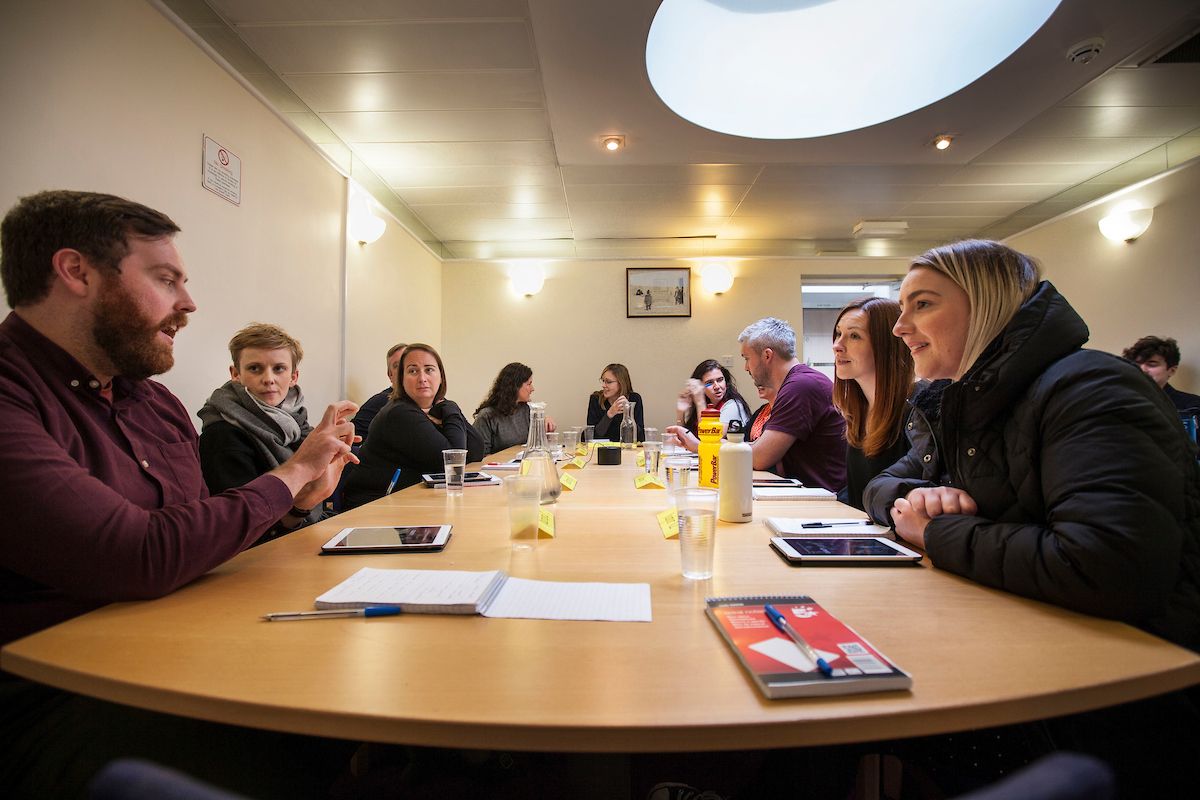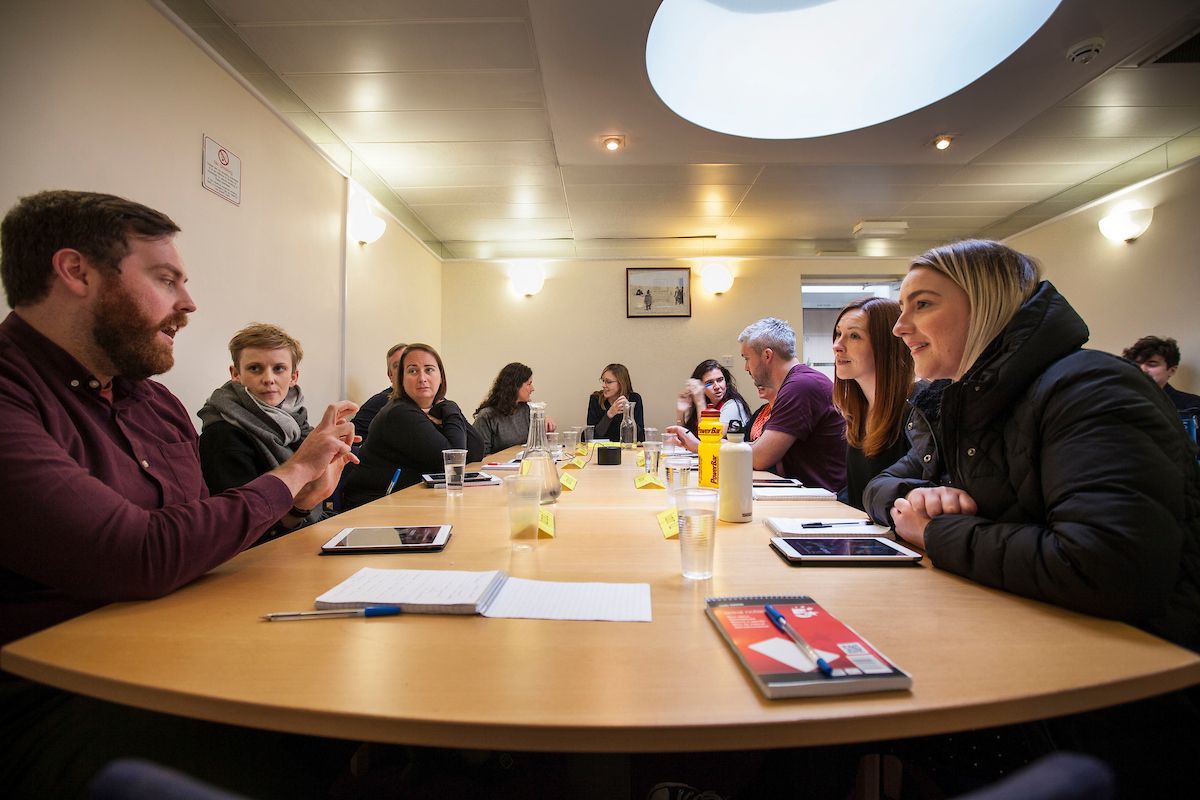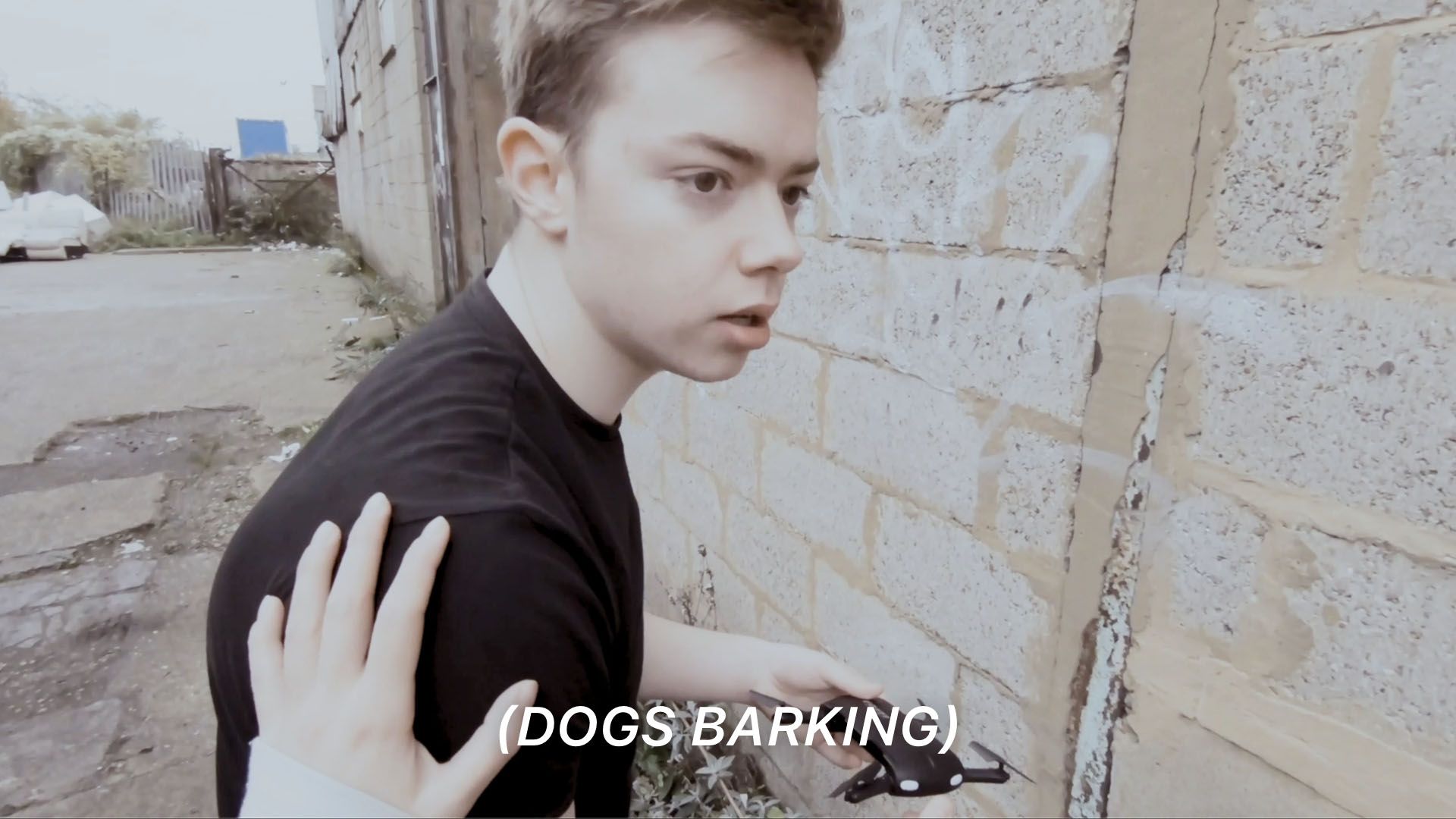How to make immersive theatre: the 7 big questions to ask yourself
Distilled from years of thinking about different types of theatre and how to make them, here are the seven questions that underpin our process.

Fast Familiar make different types of theatre and audience-centric artworks which are sometimes immersive theatre and sometimes interactive theatre and sometimes other things (you can read about this categorisation elsewhere!).
You can listen to Rachel reading the full post here…
This is a collection of the principles we use ourselves and share with other people in workshops. There are no new ideas. Our process is a mishmash of ideas we’ve learned from other people and re-purposed, and ideas that grew out of those experiments. We invite you to take what is useful, leave behind what isn’t, and make whatever you take work for you as you figure out for yourself how to make immersive theatre.
No time to finish reading this now, or want it as a document to keep?
Pop your email in below and it’s yours!
The 7 big questions
These are your foundation. Give these decent thought when you’re making and you will save yourself no end of problems down the line. So here we go…
1. Why is this form right for this story? Or form follows function
Why is this a piece of immersive theatre, rather than a play or a graphic novel or a song cycle? One of our underlying principles is that form follows function, or theme. The easiest way of explaining this is the story of how we starting making interactive or audience-centric work. Back when we were a regular theatre company, we were making a lot of work about climate justice. Around about the first half of the 2010s, we started feeling like there was an increasing tension between our work, which had a kind of activist dynamic and tried to empower people to make change in their lives - and making those people sit still and do nothing for the whole show. We knew we wanted audiences to be more ‘active’ within the artworks we made.
In 2015, we made a project called Invisible Treasure in which we wanted to explore complicity with, and agency within invisible systems (like the internet, the financial markets, the national grid). We figured that the theme of the project meant that the form couldn’t involve actors in the way our previous projects had done - if we wanted to set up invisible systems, we couldn’t have actors running around. So we started to use technology to create a space that would respond to what the audience said and did. The systems running the show would be invisible and the audience would have to decide how they wanted this temporary society to run. We ended making technology-supported interactive performance because that was the right form for the ideas we wanted to explore. Different types of theatre are suited to different stories or ideas.
That’s still very much a principle: in The Justice Syndicate, the audience are a jury, reviewing evidence and trying to come to a verdict on a difficult case. We settled on this form not because we’re big fans of courtroom dramas but because our starting point was wanting to create a space where a group of strangers could have a discussion about something important. Broadly, in our work we try to use recognisable scenarios and have people play as themselves: a jury is pretty much the only scenario where a group of strangers have to have a difficult conversation with the likelihood of disagreement pretty high - so The Justice Syndicate was born.

And why do we use technology in The Justice Syndicate? We wanted the evidence that different juries saw to be exactly the same every time - and a live actor would vary their performance and perhaps react to the vibe they were getting from the audience. Also, a jury is 12 people - that’s a non-negotiable - so a show with an audience of twelve needs to think creatively about how to be financially viable, and that means not tons of actors. Also, new forms enabled by technology allow for new stages: we’re increasingly making more phone-based artworks because we’re obsessed with the fact so many of us have these incredibly powerful tools in our pockets, that we mainly use for taking selfies or going on social media.
2. What can I learn that will teach me how to make immersive theatre better?
On a very basic level, if you are making work where the audience make choices or somehow determine some element of what might happen, you are dealing with why people do stuff. You’ll make a better artwork if you consider human psychology and neuroscience, read some books on it or work with someone who knows about it.
When we made The Justice Syndicate we worked with neuroscientist Kris De Meyer (who had seen Invisible Treasure). Kris is interested in how groups make decisions. There were lots of experiments in this in the 50s and 60s which explored this (some are now famous, like the Stanford Prison Experiment or the Milgram Experiment). It is -probably rightly- increasingly hard to get ethics approval for experiments like this. However, the kind of artworks we make can be used to study many of the same dynamics - in a much safer way. So Kris inputed into the structure of the game, and analysed what happened in early playtests, from his position of expertise. He isn’t involved in making all Fast Familiar’s projects but this experience meant we gained knowledge -and a shared language within the team- which informs everything we make. We also invite Kris to be one of the early playtesters for most of our projects - so if there isn’t someone with this expertise who has the time to collaborate, there are other ways of infusing your project with their knowledge before it reaches the public.
3. What am I ok with giving up control over?
Different types of theatre afford their creators different levels of control. As soon as your artwork doesn’t run a to b in the same way every time, you no longer have same level of control over it -and over the experience that your audience have- as you would for a traditional play. You need to be clear about which elements of the experience you are collaborating with the audience on. As a rule (and of course rules are there to be broken), Fast Familiar don’t make branching narrative format experiences, because there’s a risk of really compromising dramaturgy - an audience member within the story will not necessarily make choices which pay off earlier moments or deliver a really satisfying ending.
There’s all sorts of different ways to collaborate with audiences (more about that here), and not all of them during the actual ‘show’. In 2019, we made If I Were You, a scenario game played by two groups of young people in separate rooms, each following ‘their’ character through the same set of events. We worked with a group of young people in a series of workshops over two months to figure out what the story was about, who the characters were, the kind of language they used, and what was important to them. Essentially we co-created the world of the show with the young people. Then within the piece, players have lots of low level choices e.g. about what messages they send to the other room, and one big choice - about whether to hand over the character they find to the police. The choices that the audience make are never about the overall structure, and although there are four possible endings, all four of them pay off earlier moments and are dramaturgically satisfying.

4. What’s the primary relationship within the artwork?
The primary relationship in traditional theatre is of each individual audience member with the artwork. This is where their attention is focussed and they tend to be unaware of the other people unless they’re eating noisily or talking. Different types of theatre -like interactive and immersive theatre- allow for some other options - you can create settings where participants are acutely aware of other audience members, because the interactions they have with them are central to the artwork.
You can even remove actors -as we do- so that audience members’ interactions are not mediated via another human: the other reason that we use technology to facilitate The Justice Syndicate is because it enables us to get out of the way - and for players to interact directly with each other. We joke that for us, technology is a magic cloak of invisibility - which lets us get out of the way so the primary relationship that audience members have is with each other. Lots of Fast Familiar’s work is about how groups interact so that’s of particular interest to us. Conversely, in our immersive audio walk A Walk in the Park, the audience member’s primary relationship is with themselves - the voice that guides them through the walk stops short of being a character and is there to prompt them to reflect on how they’ve chosen to negotiate the experience.
Thinking in terms of the audience’s relationships before the content of the experience might feel like a bit of a stretch at first, but we think it’s a key element of how to make immersive theatre, and central to an audience-focused model of dramaturgy.
5. What’s the risk/ jeopardy for the participant?
Unlike other types of theatre, lots of immersive and interactive experiences ask audiences to take more risks than they would in traditional theatre, where you can sit in the dark without having to interact with other people. Placing yourself in a situation of jeopardy appeals to some people and is other people’s worst nightmare - and everything in between: risk is very personal. But we need to remember that we’re often asking a lot from our audiences - and we should reward them proportionally with what happens as a consequence.
There are questions of tone and taste which will affect what you ask of audiences. The play scholar Miguel Sicart says that play doesn’t have to be fun but it does have to be pleasurable - which is to say that an experience doesn’t have to be lovely all the time. There’s a distinction here which allows for a greater palate of experiences: solving a tough puzzle can be as satisfying as something which is light and fluffy all the way through. If you can take audiences to a tough place and bring them back safely, that’s likely to be more satisfying than keeping the whole experience above the discomfort line. Of course, it’s a question of taste and also of knowing your audiences - and the context you’ll meet them in. When we did If I Were You in schools, many young people found it challenging because at times they were asked to decide what was ‘right’ as opposed to what was ‘keeping to the rules’ - many schools in England don’t really admit that sometimes those things can be different.
Jeopardy isn’t just about what happens within the experience - in thinking about how to make immersive theatre, you can also build ‘stakes’ or ‘jeopardy’ with what happens around it. When we did The Justice Syndicate at The Four Courts in Dublin (Ireland’s most important court), we were in a tiny room at the back of the building. We could have brought audiences in through a side entrance close to that room but we chose to welcome them through the main entrance, taking them through an impressive atrium and then past statues and portraits of people who had historically upheld justice. It meant that they arrived at our tiny room with a sense of responsibility and gravity about the decision they were about to make.

6. What are the assumptions I've made?
We all move through life with a set of assumptions, informed by our experiences and the society around us. One of the reasons we love working with an interdisciplinary team is that there are different assumptions inherent to theatre, computational science - and neuroscience. It’s hard to shake your own assumptions but you can become more aware of them by looking at what you do through the lenses that other people have. Do there have to be actors in it? Does it have to be 90 minutes long? Does there have to be a story? Maybe the answer to some of these questions is ‘yes’, because of how you’ll present the artwork or the requirements of a funder. But it’s worth stating them all the same, so that everyone working on the project knows what the parameters are - and you can get on the same page of things you’ve actually made different assumptions about.
We increasingly make ourselves a design brief (or a scoping document). This will have information about the delivery model, the audience, anything we expect the audience to have (e.g. what type of smartphone will the experience work on). This kind of document is also very useful if you’re working with a partner and you want to ensure they have the same expectations of the project as you do.
7. What’s the implicit politics of what I'm making? and am I ok with that?
Every artwork is political: the stories you tell, the characters and their relative power within them, the place the story happens - and in interactive theatre, the mechanisms your artwork runs on.
Punchdrunk, one of the first companies making immersive theatre, make beautiful shows which sell out very fast, even though tickets can cost up to £90. Once in the show, all audience members are required to wear a full-face mask - this helps differentiate between characters (who are not wearing masks) and the audience. Audience members can roam around the venue as they please - this means that you might see the exciting bits of the show… or you might be in a room on the other side of the building at the time. Seasoned Punchdrunk audience members have strategies to make sure they see good bits - like following a particular character. Academic Adam Alston has characterised Punchdrunk’s work as the perfect theatrical embodiment of neoliberalism: it is your responsibility as an individual to make a success of your night - to see the good bits. You might need to push past other people to do this. The masks worn by audience members give an illusion of equality but if you’ve been to a Punchdrunk show before (i.e. if you’ve had that £90 to spend in the past), you’re at an advantage because you’re likely to have developed some tactics to deliver a better experience. This is just one example, you’ll be able to analyse for yourself the implicit politics of the different types of theatre and immersive experiences you’ve been part of.
This is part of a bigger question when thinking about how to make immersive theatre: what are you responsible for as a maker? Are you replicating the inequalities of the real world inside your artwork - or allowing them to be replicated - and is that ok? We live in a world where -for example- there is racism and homophobia. If you have people of colour or LGBTQ people in your audience, how do stop them from experiencing the kind of microagressions (or macroagressions) they might be subject to in the real world - in your piece? There are no easy answers to this but it’s something we all need to be thinking about.

